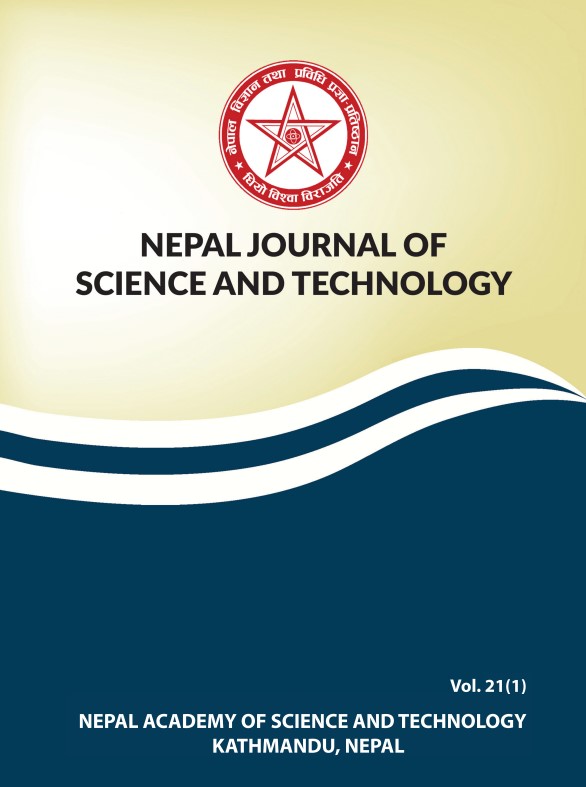Identification of Cucurbit Fruit Flies and Their Relative Attractiveness to Different Cues and Releasers
DOI:
https://doi.org/10.3126/njst.v21i1.49911Keywords:
Fruit fly, Cue lure, Methyl eugenol, Tephritids, Releaser effectivenessAbstract
Tephritids are the major challenges for fruit and fleshy vegetable growers of the tropics and subtropics. Nepal also incurs huge losses of fruits and vegetables to the tephritids. This study was designed to identify the tephritid flies in Malepatan and Lumle of Gandaki Province. Bucket traps baited with methyl eugenol (ME) in Malepatan, and ME, cue lure (CL) and a mixture of ME and CL (ME+CL) with different releasers; tube, cotton and paper were installed at Lumle in 2020 summer. Three species of the fly (Bactrocera dorsalis, Bactrocera zonata and Bactrocera correcta) were recorded from Malepatan, dominated by B. dorsalis. The B. correcta count was negligible. While in Lumle, B. dorsalis was the most dominant, followed by B. zonata till July, after which, till August, B. tau followed the B. dorsalis. Seven species of the tephritids (B. zonata, B. dorsalis, B. tau, B. diversa, B. scutellaris, B. correcta and B. cucurbitae) were recorded from this region. Among the releasers, paper releaser was found more effective as compared to cotton and tube. However, the lures should be changed in a short interval, by two weeks, to acquire a satisfactory result. This study unveils that the study site already inhabits seven species of fruit flies. So, the monitoring with different cues could be an effective tool for species actuation. Additionally, the paper releasers could be recommended for further use in the traps for monitoring and mass trapping purposes.
Downloads
Downloads
Published
How to Cite
Issue
Section
License

This work is licensed under a Creative Commons Attribution-NonCommercial 4.0 International License.
Authors retain copyright and grant the journal right of first publication.




